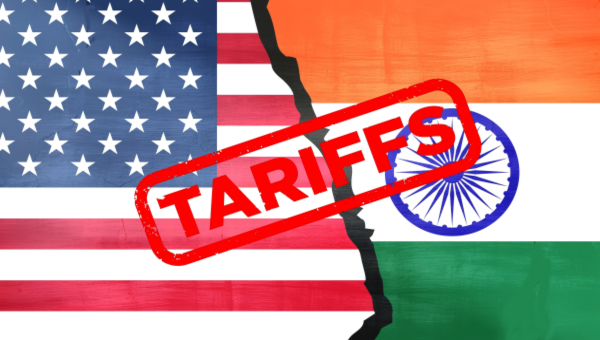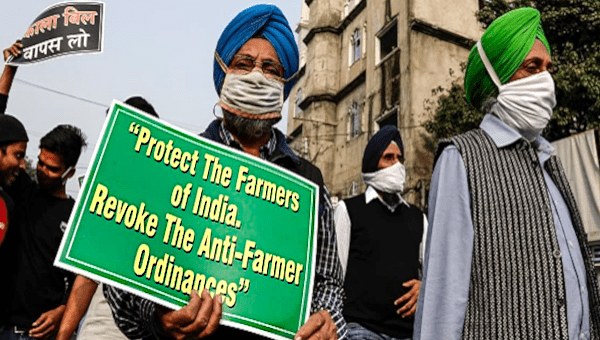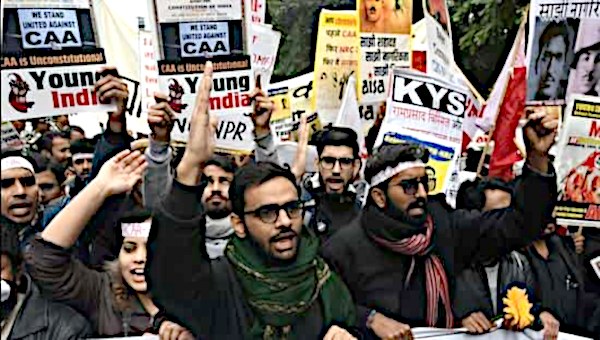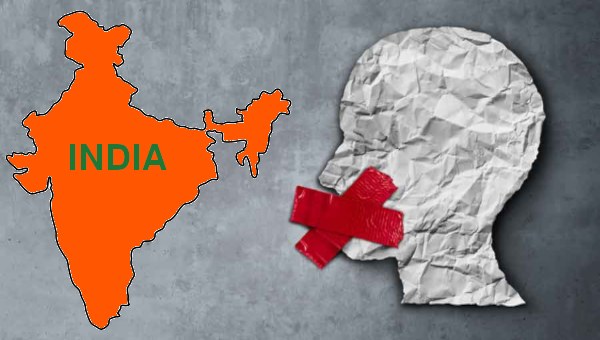The Economic Fallout of India under Modi and the BJP
India is the world’s largest democracy, but perhaps not as secular as it was before PM Narendra Modi, leader of the BJP (Bharatiya Janata Party), came to power in 2014. As Modi stands at the edge of his second term, all efforts are being put into making history by becoming the second person, after Jawaharlal Nehru, to rule consecutively for three terms in India. Although Modi miserably failed to achieve anything concrete economically, he successfully used religious and cultural rhetoric to dilute mass consciousness against the economic failure of his government. The majority of the people, hooked to the rhetoric of PM Modi spread over the small screen nationwide, are still oblivious to the tragic state of the economy. The alliance between BJP, neoliberal capitalist elites, and the Rashtriya Swayamsevak Sangh (RSS – a right-wing Hindu paramilitary group linked to the BJP) has thrown the Indian economy into what the economist John Maynard Keynes called, in the context of the great depression, a ‘colossal muddle.’ On the surface, it seems that Modi wants to establish a cultural hegemony. But as we try to unravel this further, we realize that cultural hegemony is a tool to encourage a popular ‘false consciousness’ and divert attention away from the real contradictions of neoliberal capitalism.
Putting Modi’s rhetoric aside, the macroeconomic policy of the two consecutive BJP governments since 2014 is not very different from the previous government’s policy with regard to the espousal of neoliberal ideology. However, the former has been more conducive to the market-expanding objectives of Indian capital. The policies of the Modi government have been more radical, unsound, and incompatible with the remnants of Indian social democracy. The elimination of most of the regulations and controls on big businesses, disinvestment in public sector units tax concessions to big corporations, privatization of health and education, introduction of the Goods and Services tax, and low fiscal deficit are some critical features of the Modi regime in India. In addition to this, Modi’s desire to execute several new, but far from wholesome, policy changes that he promised in various campaigns in previous and the current election have played a substantial role in pushing India to the verge of economic crisis.
We argue that the rise of Modi-led authoritarianism in India is an outcome of the failure of the neoliberal project to deliver anything substantial to the majority of the population in the last three decades.

Economic Consequences of Modi’s Rule
The rise and entrenchment of the right-wing in contemporary India has pushed the Indian economy into a grave crisis. Modi’s agenda to bolster the market power of national monopoly capitalists (big business houses who heavily sponsored the BJP’s 2014, 2019 and recent election campaigns), along with his own communal aspirations, has exposed the fault lines of authoritarian neoliberalism in India. However, more dangerous is the turn that this authoritarian neoliberalism might take in the future. If authoritarianism is able to take control of the state apparatus, then as it expands, prompted by the expansive interests of capital, authoritarianism can transform into overt fascism within the context of a crisis of capital accumulation. The same might be the case of current developments in India, with the past decade doing little to diminish this fear.
After acquiring a political mandate through the support of Indian capital, the BJP tried to forge its own economic path, one fraught with uncertainty and ambiguity, and popularly known as Modi-nomics. This term – Modi-nomics – refers to Modi’s overall economic vision, the seeds of which were sown during his tenure as the chief minister of the state of Gujarat in the early 2000s. The BJP’s 2014 campaign leveraged the ‘Gujarat model’ of clean government and economic competence, something they promised to replicate nationally.
However, as in Gujarat, the BJP’s “business friendly” policies have left little to spend on social goods, leading to high inequality. India is slipping further in the Global Hunger Index. The 2023 Global Hunger Index saw India slip four places to rank 111 out of 125 countries. Meanwhile, there has been a spectacular rise in the income share of top-income groups, which include global and domestic capitalist classes, domestic bureaucrats, domestic politicians, etc. The Periodic Labour Force Survey (PLFS) data for 2017-18 shows that the real wages for regular workers in urban areas have declined by 1.7% per annum and in rural areas by 0.3% per annum compared with the 2011-12 levels. According to some estimates, approximately 1 million individuals in a country with a population of 1.4 billion now control 80% of the nation’s wealth, creating an illusion of national prosperity. The number of ultra-rich individuals in India has grown to be 11 times higher in the last decade, prompting the World Inequality Lab to label India as a ‘Billionaire Raj,’ where income inequality is now worse than it was under British rule.
This uneven development in favour of the economic elites, coupled with BJP’s Hindutva policy, has led to unparalleled social polarization with the continuing impoverishment and marginalization of the most vulnerable groups: Muslims, Dalits, and Adivasis. Whether the BJP has delivered on the electoral promise of ‘Together with all, Development for all’ is then a moot point.
While inequality has undeniably reached pernicious dimensions, the overall growth of the economy is not any better. The annual growth of the Indian economy during the BJP regime, from 2014 to 2022, assuming that the official figures are accurate, was around 5%. This figure, as per Arvind Subramaniam, the former Chief Economic Advisor to the Government of India, is about 2 to 2.5% less than the official estimates of GDP growth from 2011-12 and 2016-17. The sluggish growth is also reflected in the growth of industries.
There is hardly any core industry that has recorded decent growth during the BJP regime. For instance, despite the much-trumpeted “Make in India” campaign, manufacturing’s share of the GDP has fallen from more than 15% in 2014 to nearly 13% in 2022.
The most devastating example of the Modi government’s economic failure is the unemployment situation in the country. According to Periodic Labour Force Survey (PLFS) data from 2017-18, in 2011-12, the total workforce in India was 472 million, which has declined to 457 million in 2018 due to the current economic slowdown. An incontestable inference of this is that 15 million discouraged workers have left the labour market. The chronic unemployment, according to PLFS data, was 6.1% in 2017-18. And if we calculate the absolute number, it comes to around 28 million workers. It means that 28 million workers in India who are ready to work and available for work at the given wage rate remain chronically unemployed. Despite all the manipulations to tone down the unemployment figures, it remains the highest in the last 45 years since the National Sample Survey Organization (NSSO) conducted its first survey. Not only has Modi miserably failed to deliver the 2 crore (2 x 10 million) jobs annually that he promised in 2014, but he has also failed to double farmers’ incomes, which is evident when we simply compare the increase in cost of farm inputs with the MSP hikes over 10 years.
Although the economy was meant to be the government’s priority, the eruption of movements like the Patidar agitation during its first term and the Farmers’ movement in the second term is a constant reminder of its failure in that very realm. While the Patidar agitation galvanized frustration about the lack of jobs and opportunities for the Patidars – one of the dominant castes in Gujarat, in to a movement against the quota system, the Farmers movement emerged as a united front of farmers from all over India to protest against the Modi government’s push to corporatize Indian agriculture.
Factors Responsible for the Colossal Muddle
‘Minimum government, maximum governance’ was the central plank of Modi’s 2014 election campaign when he vowed to create an enabling environment for businesses to prosper. This translated into several pro-big-business policies, corporate tax reduction, and a more liberalized FDI policy regarding previously locked sectors aimed at favouring select corporates. For instance, Mukesh Ambani’s wealth increased from ₹1.68 lakh crores to ₹3.65 lakh crores (188%) between 2014 and 2019. In Gautam Adani’s case, the wealth zoomed up by 121% from ₹50.4 thousand crores in 2014 to ₹101 lakh crores in 2019. These ultra-liberal policies, along with the right-wing agenda, have aggravated the economic distress in the country.
The neoliberal project of the contemporary authoritarian regime includes the commitment to carry out structural reforms that are conducive to restructuring and disciplining the economy as per the requirements of the capitalist class. To meet the objectives of reconfiguration of political and economic systems, the grand alliance (right-wing authoritarian and the big bourgeoisie) has agreed to vacate one sphere to the other. The economy is assumed by the economic elites while politics is now the domain of the right-wing authoritarian forces. Both these forces have also agreed to facilitate each other in their respective spheres. To fulfil the agenda of neoliberal and authoritarian projects, two important authoritarian shocks were introduced in the name of populist promises of action against corruption and national economic unity. These shocks threw the Indian economy into a “colossal muddle” with shocks that have had important class dimensions for Indian society.
First among the shocks was the alleged attempt to bring “black money” (approximately Rs. 5 trillion) back into the economy. This first shock was introduced on November 8, 2016, when the government made an authoritarian announcement (i.e., without consulting with the Reserve Bank of India) of invalidating the high-value currency overnight. This action resulted in an acute shortage of money in circulation without any return to the economy. The authoritarian decision of demonetization, instead of healing the economy with all the collected black money, injured the informal sector activities gravely. This sector accounts for nearly 90% of India’s population and works as a major driver of aggregate demand in the economy. As per the Reserve Bank of India, of the ₹15.41 lakh crores worth ₹500 and ₹1,000 notes that were in circulation on November 8, 2016, only notes worth ₹15.31 lakh crores (99.3%) have returned to the banks—leaving the black economy unscathed. Instead, demonetization has imposed substantial costs on the majority of informal and small business sectors in the form of lost jobs, decreased investment, and poor growth. It has destroyed petty production activities. The survey of 173,000 households conducted by the Center for Monitoring Indian Economy (CMIE) four months before and after the announcement of demonetization found that demonetization was responsible for up to 3.5 million job losses in India.
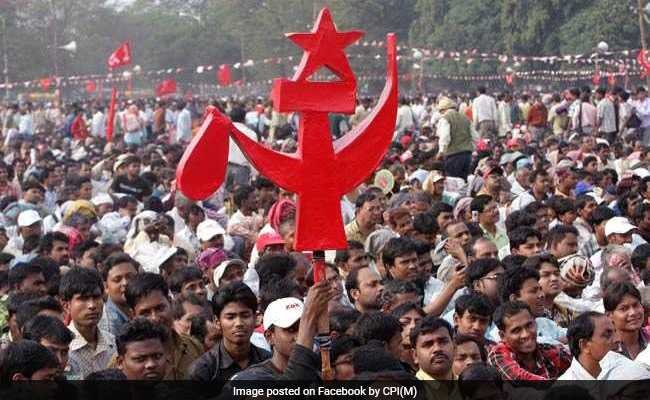
While the informal sector workers and small producers were still struggling to recover from the trauma of the first shock, a second authoritarian shock was injected on July 1, 2017, in the form of a Goods and Services Tax (GST). The GST was not only an authoritarian assault on the constitutional rights of the state, undermining the federal structure based on the slogan of “one country, one tax,” but also a neoliberal assault on the economic activities of the informal sector. The fiscal consolidation efforts through the GST were based on the idea of tax neutrality, i.e., to ensure that total tax collection under the GST remains the same as under the previous tax regime. To maintain this, the BJP government widened the tax base and increased the average tax rate on the informal sector in order to compensate for the reduction of the average tax rate on big corporate capital. The imposition of demonetization and the GST has squeezed the transactions and activities of the informal sector.
While the aggregate economy has plunged into loss, the ruling capitalist class has emerged as a net gainer of these authoritarian shocks. It has helped the corporate and financial elites to expand their command over the production and exchange system. The class aspects of demonetization and the GST can be examined from the fact that these authoritarian shocks have hit small and informal businesses in particular. As per a government statement in Lok Sabha, in 2019, a total of over 6.8 lakh companies had been closed across India, which accounted for 36.07% of a total of 1,894,146 companies that are registered under the Registrar of Companies. At the same time, the income of the super-rich section of the Indian capitalist class has increased manifold. The deflationary policy of demonization aided the capitalist class in the form of displacement and dispossession of production activities of petty and small firms due to a shortage of cash and a deficiency of demand for their products. Similar solicitude for the interest of the capitalist class was also apparent in the government’s implementation of the GST, the distributional outcomes of which are straightforward. The introduction of the GST has brought petty and small producers under the tax net and increased the unit cost of their products in comparison to big firms. These two authoritarian shocks have facilitated the seamless and simultaneous occurrence of two processes highlighted by Marx: first, a process of primitive accumulation of capital (through destruction of petty production activities); and second, a process of centralization of capital (through destruction of small capitalist producers) in India.
The peculiar feature of the austerity program of the authoritarian neoliberal regime is that it has eroded the standard procedure of deliberation, scrutiny, and critique for its rationality that, as Amartya Sen argued, nowhere passes the test of critical scrutiny and collective rationality—a precondition for a democratic society. The politicization and centralization of economic policies, the pro-big business policy framework and implementation, and the unchecked political power have not only seriously damaged the economic health of the country but, more importantly, have sharpened the economic and communal divide in the society.
The Economics of BJP’s Politics
It is immensely important to understand the relationship between economics and the politics of the BJP government. Defining the interrelationship between economics and politics, Lenin pointed out that “politics is the most concentrated expression of economics.” The contemporary neoliberal authoritarianism project of BJP is not very different from classical fascism, and it has corrupted the consciousness of the lower-middle class in a way that aligned them with the interests of big monopoly capital. The alliance between right-wing extremist forces and neoliberal capital is well evident from the fact that the BJP’s expenditure surged from ₹714 crore in the 2014 Lok Sabha election to ₹1,264 crore in the 2019 Lok Sabha election. According to the Election Commission of India (ECI), between FY14 and FY23, total poll spending by all political parties amounted to ₹15,647 crore. Of this, the BJP accounted for 55% of expenditure. Although the specific expenditure figures for the ongoing general elections have not yet been disclosed, the BJP emerges as the highest spender on Google ads compared to other political parties and government entities. Since January 1, all political parties and their affiliated organizations have collectively invested ₹117 crore in Google ads. Of this total, the BJP alone contributed ₹ 39 crore, representing approximately one-third of the overall amount spent. Following the BJP, the Central Bureau of Communication (CBC), the government’s primary advertising agency, allocated ₹ 32.3 crore to Google ads during this period.
A central question is posed: where did the money come from? It’s clear these were not self-financed election campaigns. The BJP received substantial financial support from major global and domestic entities, such as the Adani and Ambani Groups, in addition to parallel efforts by RSS workers. With significant election backing from these corporations, it places a moral obligation on the BJP government to prioritize their interests above all else, regardless of the costs involved.
These costs are cleverly managed by the Indian authoritarian state using two types of apparatuses: diverting attention away from the economic catastrophe produced by the ultra-neoliberal policies. First, the populist apparatus that functions through carefully crafted advertisements to create false nationalist consciousness attacks all types of freedom in the name of culture and religion, and tightens the government’s grip on trade unions, administration, media, education, minorities, etc., in the name of economic development. Second is the repressive state apparatus that functions through massive clampdowns on those who oppose the injustice of state policies, including but not limited to pro-people intellectuals and activists, and even students. Both types of measures are necessary pre-conditions to ensure the “freedom of Capital” to intervene in any sphere of life and exploit it in order to strengthen the accumulation network. A good example of this type of state would be that of Napoleon the Third (described by Marx in The Eighteenth Brumaire of Louis Bonaparte). His was a police state of the most rigid and oppressive type, but he pursued an economic policy that we today call “ultra-liberal.”
In addition to these two apparatuses, the inconsistencies in economic policy, as a result of the outright precedence that authoritarian populism and ethnonationalism have taken over economic prudence, is also proving counterproductive. The type of political and economic management of the society that is on the rise in India, in particular, and around the globe, in general, are characterized by Hungarian sociologist Baliant Magyar as the “rise of mafia state.”
Our argument asserts that the ascendancy of authoritarian neoliberalism is a direct response to the crises within capitalism. Essentially, it represents an outcome of capitalist strategies aimed at fulfilling the fundamental objectives of capitalism. This approach serves to conceal the deep-seated internal contradictions inherent in capitalism, which pose substantial risks due to their structural roots within the economic system. Neoliberal authoritarianism is orchestrated to tightly regulate the political sphere while simultaneously deregulating the economic sphere as per the dictates of neoliberal capitalism. Throughout history, it has been evident that achieving market freedom often necessitates curtailing political freedoms. The unholy collusion between right-wing extremism and neoliberal capitalism has not only violated truth in order to grab power and tighten control over all aspects of human life but, more importantly, as Lukacs once said, destroyed reason as a road map of societal progress and prepared the ground for rise of fascism.
This discussion of Modi’s economic policies brings us back to the current election in India and the potential worsening of the economy if the BJP retains power. For the BJP and Modi, this would likely mean intensifying their diversionary and divisive tactics, evident in the current campaign, to avoid addressing critical issues of material life and livelihood at all costs. For instance, the BJP’s election campaign was fretted with the narrative of the Ram Temple in Ayodhya (Uttar Pradesh), and how the Congress and its allies, if elected to power, will not only demolish the Hindu temple but also redistribute Hindu’s wealth to Muslims. This may well mean for the Indian state the deepening of not only the economic crisis already looming large. But also could lead to further sharp declines in secular values and democratic rights, exhibiting all the characteristics of fascism.
There is, however, still glimmers of hope. During Modi’s first term, there was only one significant people-led protest (against the Land Acquisition bill which was eventually withdrawn). In his second term, despite winning with a greater majority, there were three major popular mobilizations: the 2019 strike against the BJP government’s anti-union legislation; the 2019-20 Citizenship (Amendment) Act – National Register of Citizens (CAA-NRC) protests; the mass Famers’ Protests of 2020-21; along with many other smaller agitations against austerity measures. In the wake of growing economic distress and repression of democratic institutions, these protests are likely to increase in the near future. The Indian left must work toward building a worker-peasant alliance through these struggles and develop an anti-austerity agenda against the neoliberal policy regime and the neofascist alliance of the BJP. •
Parts of this article are drawn from essays by the author published in Studies in Political Economy and World Review of Political Economy.


